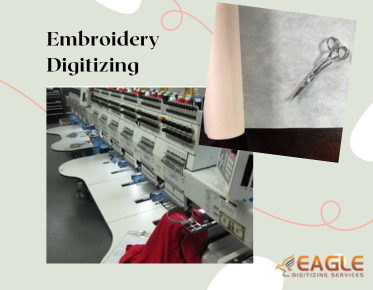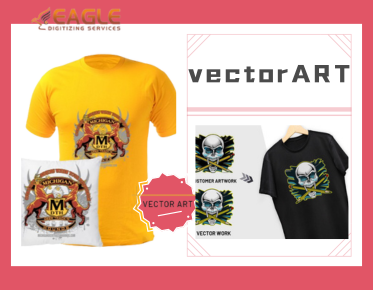Font Fixes: Tips on Raster to Vector Conversion Challenges
In the world of design, fonts are more than mere letters; they breathe life into visual communication, shaping the narrative of a brand and evoking emotions. However, the journey from raster to vector presents a unique set of challenges, particularly when it comes to fonts. Raster images, composed of pixels, can distort and degrade fonts, making the transition to vector graphics—a format built on paths and curves—fraught with potential pitfalls. This article dives into the intricacies of font-related issues in raster to vector conversion, offering insights and solutions to ensure a seamless transformation.
Common Scenarios Where Font Issues Arise
Font issues typically emerge in various scenarios, such as scanning old documents, using low-resolution images, or converting web graphics. In each case, the original clarity of the font can deteriorate, making it challenging to recreate accurately in vector format. Furthermore, inconsistencies in font styles can lead to visual discord, diminishing the overall aesthetic of the design.
Choosing the Right Conversion Tools
Overview of Popular Raster to Vector Conversion Software
Several software options exist for converting raster images to vector format, each with its strengths and weaknesses. Programs like Adobe Illustrator, CorelDRAW, and Inkscape offer robust features, allowing designers to achieve high-quality results. Understanding the capabilities of each tool will empower designers to make informed choices that suit their specific needs.
Key Features to Look for in Conversion Tools
When selecting a conversion tool, look for features such as image tracing, customizable settings, and support for various file formats. The ability to adjust settings for color reduction, smoothing, and threshold levels can significantly enhance the quality of the vector output. Moreover, user-friendly interfaces can streamline the conversion process, making it easier to navigate and implement adjustments.
Recommended Tools for Handling Font Issues
For font-related issues specifically, tools like Vector Magic and Adobe Capture are excellent options. These tools specialize in font recognition and can help convert raster fonts into clean, editable vector outlines. By leveraging the right tools, designers can address font issues efficiently and effectively, ensuring a smoother transition.
Understanding Font Formats: What You Need to Know
Exploring Different Font Types: TrueType, OpenType, and More
Fonts come in various formats, each with its unique characteristics. TrueType fonts (TTF) offer scalability and are widely compatible across platforms. OpenType fonts (OTF) enhance functionality, allowing for advanced typographic features such as ligatures and alternate characters. Knowing these differences can guide designers in selecting the best font format for their projects.
The Impact of Font Formats on Conversion Quality
The font format can significantly influence conversion quality. Certain formats retain more detailed information about font metrics and styles, leading to a more accurate recreation in vector form. It's advisable to choose fonts that are optimized for the intended application, ensuring that the conversion retains the integrity of the original design.
How to Choose the Right Font for Your Project
Choosing the right font involves considering the project's objectives, target audience, and overall aesthetic. Experiment with various fonts, analyzing how each one interacts with your design elements. Test their legibility and emotional impact, ensuring that they align with the message you want to convey. Ultimately, a thoughtful font selection can elevate your design from good to exceptional.
Preparing Your Raster Image for Conversion
Tips for Optimizing Your Raster Image Before Conversion
Before diving into conversion, take the time to optimize your raster image. Start by cropping any unnecessary elements that could detract from the font focus. Adjust brightness and contrast to enhance visibility, ensuring that the fonts stand out clearly against the background. These preliminary steps will set the stage for a successful conversion.
Resolution Matters: Finding the Right DPI for Quality
Resolution is a critical factor in the conversion process. A minimum of 300 DPI (dots per inch) is generally recommended for high-quality results. Higher DPI values provide more detail, which is essential for accurately tracing fonts during the conversion. If your raster image is low-resolution, consider upscaling it or obtaining a higher-quality version before conversion.
How to Clean Up Your Image for Better Font Recognition
Cleaning up your raster image can significantly improve font recognition. Use image editing software to remove blemishes, noise, or artifacts that could confuse the conversion tool. Apply sharpening filters to enhance clarity, and ensure that the colors are balanced and vibrant. A pristine raster image will yield more accurate and aesthetically pleasing vector results.
Manual vs. Automated Conversion: Finding the Right Approach
The Pros and Cons of Manual Conversion
Manual conversion allows for meticulous attention to detail, enabling designers to achieve precise results. This approach is particularly beneficial for complex designs with unique font characteristics. However, it can be time-consuming and labor-intensive, especially for larger projects. Weigh the need for precision against the time available to determine the best course of action.
When to Rely on Automated Tools for Font Conversion
Automated tools excel in efficiency, allowing for quick conversions, particularly for standard fonts or less intricate designs. They can handle bulk processing, saving valuable time and effort. However, the quality of automated conversions may vary, especially for fonts with complex shapes or unique characteristics. It's essential to assess the specific needs of your project when deciding between manual and automated options.
Balancing Efficiency and Quality in Your Workflow
Striking a balance between efficiency and quality is vital in any design workflow. Consider employing a hybrid approach: use automated tools for standard conversions while reserving manual techniques for more intricate projects. By leveraging the strengths of both methods, you can optimize your workflow and achieve high-quality results without sacrificing valuable time.
Recreating Fonts Manually in Vector Software
Step-by-Step Guide to Tracing Fonts in Vector Programs
Recreating fonts manually in vector software involves a systematic approach. Begin by importing the raster image into your vector program. Use the pen tool to trace the outlines of each letter, ensuring that you maintain the original proportions and shapes. Zoom in for accuracy, paying close attention to curves and angles. Once traced, adjust the paths as necessary to refine the font appearance.
Using the Pen Tool: Techniques for Accurate Font Recreation
The pen tool is your best friend when it comes to tracing fonts. To achieve accuracy, familiarize yourself with its functionalities, such as anchor points and direction lines. Start with simple shapes, gradually progressing to more complex letterforms. Practice makes perfect; the more you use the pen tool, the more intuitive it will become.
Adjusting Letterforms for Consistency and Legibility
After tracing, it’s essential to assess the overall consistency of your letterforms. Ensure that stroke widths are uniform and that letters maintain a coherent style. Adjust spacing and proportions to enhance legibility, creating a visually pleasing composition. Remember, legibility is key; a beautifully crafted font is only effective if it can be read effortlessly.
Dealing with Missing Fonts in Vector Conversion
How to Identify and Replace Missing Fonts
Missing fonts can pose a significant challenge during the conversion process. When a raster image contains fonts that are not available in your vector software, identifying these discrepancies is crucial. Utilize font identification tools or apps to match the missing fonts. Once identified, you can either replace them with similar fonts or recreate them manually.
Finding Alternatives: Choosing Fonts That Match Closely
If the original font is unavailable, finding alternatives is essential. Look for fonts that closely mimic the style, weight, and character of the missing font. Online resources and font libraries often provide similar options, allowing for a seamless transition. Ensure that the alternative font aligns with the overall design aesthetic to maintain brand consistency.
Embedding Fonts in Your Vector Files for Consistency
To avoid issues with missing fonts in the future, consider embedding fonts within your vector files. This practice ensures that the fonts remain intact, preserving their appearance regardless of the software or device used to view the file. Most vector software offers options for embedding fonts, so take advantage of this feature for peace of mind.
Addressing Kerning and Tracking Issues
Understanding Kerning and Tracking: Why They Matter
Kerning and tracking are vital aspects of typography that significantly impact the visual appeal of text. Kerning refers to the space between specific letter pairs while tracking pertains to the overall spacing across a word or line of text. Both elements contribute to legibility and aesthetics, influencing how the audience perceives the design.
How to Adjust Letter Spacing in Vector Graphics
Adjusting letter spacing in vector graphics is straightforward. Select the text and utilize the character panel in your vector software to modify kerning and tracking values. Experiment with different settings, ensuring that the spacing feels natural and enhances readability. Strive for balance; too much space can create disjointed text, while too little can lead to clutter.
Ensuring Consistent Typography Across Your Design
Consistency is key in typography. Ensure that kerning and tracking adjustments align across all design elements, maintaining a cohesive visual experience. This attention to detail will enhance the professionalism of your work and leave a lasting impression on your audience.
Exploring Font Licensing and Legal Considerations
Understanding Font Licensing: What You Can and Can't Do
Navigating the realm of font licensing is essential for every designer. Fonts are intellectual property, and using them without proper licensing can lead to legal ramifications. Familiarize yourself with the licensing agreements associated with each font, understanding the limitations on usage, modification, and distribution.
The Risks of Using Unlicensed Fonts in Your Projects
Using unlicensed fonts exposes designers to potential legal risks and financial penalties. Furthermore, it undermines the integrity of the design community. To safeguard your projects and reputation, always ensure that the fonts you use are properly licensed for your intended application.
Resources for Finding Free and Licensed Fonts
Fortunately, numerous resources exist for finding free and licensed fonts. Websites like Google Fonts, Adobe Fonts, and DaFont offer a variety of options that cater to different design needs. Always verify licensing agreements to ensure compliance, and consider investing in premium fonts for unique and high-quality options.
Testing Fonts After Conversion
How to Review Fonts for Legibility and Quality
After conversion, testing fonts for legibility and quality is paramount. Review the vector output closely, examining letterforms for accuracy and clarity. Ensure that the font maintains its intended appearance and is easily readable across different sizes and formats.
Conducting Side-by-Side Comparisons: Raster vs. Vector
To evaluate the effectiveness of your conversion, conduct side-by-side comparisons between the original raster image and the newly created vector graphic. Assess differences in clarity, legibility, and overall aesthetics. This comparison will help identify any lingering issues that need addressing before finalizing the design.
Getting Feedback: Involving Peers in Font Evaluation
Involving peers in the evaluation process can provide invaluable insights. Seek feedback from fellow designers or stakeholders, encouraging them to assess the legibility and overall appeal of the fonts. Fresh perspectives can uncover issues you might have overlooked and enhance the final output.
Addressing font-related issues in raster to vector conversion is a multifaceted challenge that requires a blend of technical skill and design sensibility. By understanding the nuances of typography, selecting the right tools, and preparing raster images thoughtfully, designers can navigate this complex terrain with confidence. Embracing the artistry of typography not only enhances design quality but also enriches the overall visual communication experience. With these tips in hand, designers can conquer font challenges, creating compelling vector graphics that resonate with their audiences.



